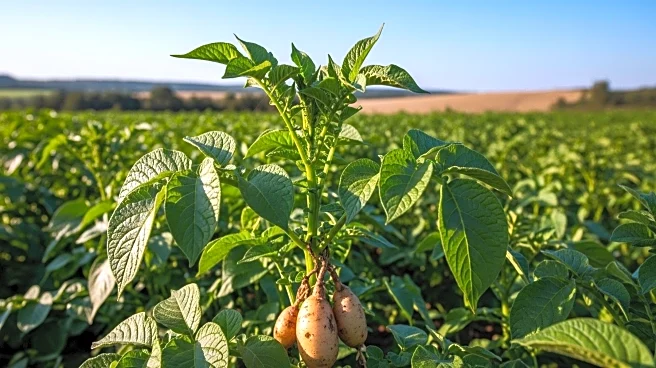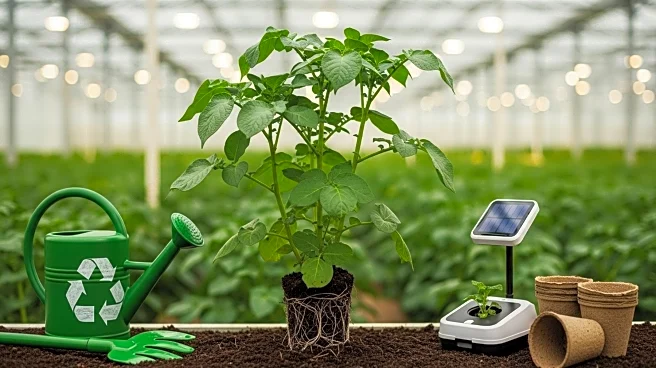What's Happening?
The agriculture sector in India is facing a critical challenge as it struggles to attract young people due to the perception of farming as labor-intensive and financially unrewarding. The rising costs of seeds, machinery, and other inputs, compounded by varying Goods and Services Tax (GST) rates, have made farming less appealing. The Indian government is considering GST reforms to make agriculture more attractive by potentially lowering tax rates on essential farm machinery and advanced irrigation tools. This move aims to reduce the financial burden on farmers and encourage innovation in the sector. The current GST rates on high-efficiency irrigation systems and modern farm machinery range from 12 to 18 percent, which adds to the financial strain on young farmers looking to invest in technology-driven farming solutions.
Why It's Important?
The potential GST reforms are significant as they could transform agriculture into a more viable and attractive career option for the younger generation. By reducing the cost of entry into farming, these reforms could help retain youth in rural areas, thereby addressing the issue of urban migration. This is crucial for India's food security and economic stability, as the agriculture sector plays a vital role in the country's economy. Lowering GST rates on agricultural technology could also spur innovation and productivity, aligning with global trends where countries like Israel and Japan have successfully integrated technology into farming. The reforms could lead to a more sustainable agricultural sector, capable of meeting the demands of a growing population while adapting to climate pressures.
What's Next?
If implemented, the GST reforms could lead to a series of changes in the agricultural landscape. The government may need to coordinate with state governments to manage potential revenue losses from reduced GST collections. Additionally, complementary measures such as improving rural infrastructure, providing easier access to credit and insurance, and promoting skill development for young farmers will be essential to maximize the impact of the tax reforms. These steps could help transform agriculture into a modern, tech-driven industry that offers real prospects for young entrepreneurs.
Beyond the Headlines
The proposed GST reforms highlight the broader challenge of making traditional industries appealing to the younger generation. The success of these reforms could serve as a model for other sectors facing similar issues. Moreover, the focus on reducing costs and promoting innovation in agriculture could have long-term benefits for environmental sustainability, as it encourages the adoption of eco-friendly practices and technologies.












